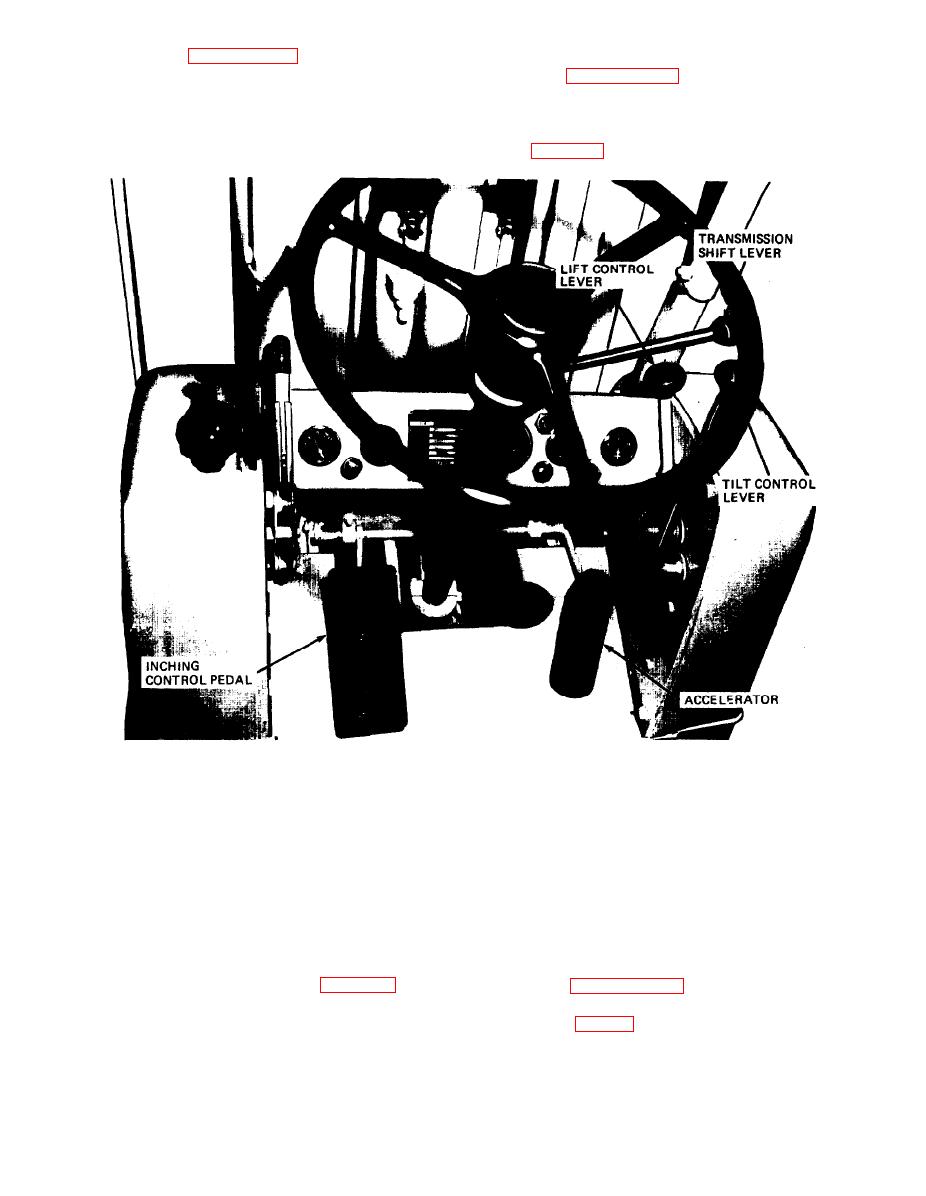 |
|||
|
|
|||
|
|
|||
| ||||||||||
|
|
 2-13. Lifting and Transporting a Load
parked, refer to paragraph 2-10 to stop truck engine.
Park truck on level surface if possible. If necessary
a. Refer to paragraph 2-12 and move the truck to
to park truck on an incline, set brakes and block at
the vicinity of the load.
least two wheels in event of parking brake failure.
b. As truck nears load, bring truck to a halt and
Caution: Make sure forks are lowered to the
raise or lower forks to position them under a load.
ground and parking brake is engaged firmly.
Refer to figure 2-6 for listing operations.
1.
BRING TRUCK TO A HALT.
2.
RAISE OR LOWER FORKS, USING LIFT CONTROL LEVER, TO BRING FORKS IN LINE WITH LOAD.
3.
MOVE TRUCK FORWARD, USING INCHING CONTROL AND ACCELERATOR, TO BRING FORKS UNDER LOAD.
4.
PULL LIFT CONTROL LEVER TO REAR TO RAISE FORKS AND LOAD TO CLEAR GROUND OR STACK. MOVE
TRUCK IN REVERSE TO CLEAR STACK.
5. TILT MAST TO THE REAR BY PULLING TILT CONTROL LEVER TO REAR, TO SAFELY TRANSPORT LOAD.
6. RAISE OR LOWER LOAD AS NECESSARY, USING LIFT CONTROL LEVER.
ME 3930-621-12/2-6
Figure 2-6. Lifting operation.
steady before lifting and keep the load against the
c. If load is on a pallet, center forks between upper
carriage backrest.
and lower members of pallet. With the mast in verti-
cal position, move truck forward (para 2-12) using
d. Refer to paragraph 2-12 and move truck away
accelerator and inching control, until load rests
floor below the load. Tilt must back by pulling tilt
against rear of forks.
control lever (fig. 2-6) to rear. Mast must be tilted
Caution: Know the rated capacity of the truck.
far enough to rear to travel safely with load. To in-
Do not overload it. Never pick up a load until cer-
crease speed of lift and tilt movement, increase en-
tain it can be carried safely. Make sure the load is
gine speed.
2-8
|
|
Privacy Statement - Press Release - Copyright Information. - Contact Us |